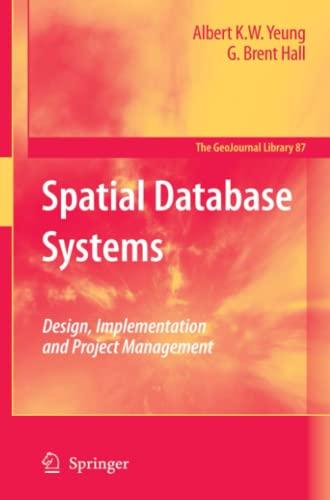Question
Complete the implementation of ADT queue in Java (NOTED IN CODE): public class ArrayQueue implements MyQueue { private T[] Q; //used to store data into
Complete the implementation of ADT queue in Java (NOTED IN CODE):
public class ArrayQueue implements MyQueue { private T[] Q; //used to store data into this array in a queue manner
private int size; // the total number of elements in the queue private int first; // the index of the first element in the queue private int rear; // the index of the next available element (last one's next) public ArrayQueue() { Q = (T[]) new Object[2]; // initialize the queue as an array of size 2 size = 0; // size is 0 since this is an empty queue // initialize other instance variables: } /** * is empty? */ public boolean isEmpty() { // your implementation here: return true; } /** * @return the number of items in the queue */ public int size() { // your implementation here: return 0; }
/** * enqueue: add an element at the tail of queue */ public void enqueue(T item) { // your implementation here: if(size==Q.length); { resize(Q.length*2);} Q[back]=item; back++; back=back%Q.length; size++; }
/** * dequeue: remove and return the head of the queue * @return the deleted value * @throws NoSuchElementException if queue is empty */ public T dequeue() { // your implementation here: return null; }
/** * peek: view the head of queue without removing it. * @return Null if queue is empty */ public T peek() { // your implementation here: return null; } }
public class ListQueue implements MyQueue { private class Node { T item; // public Node next; // null } private Node head = null; private Node tail = null; private int size = 0; /** * is empty? */ public boolean isEmpty() { // your implementation here: return true; } /** * @return the number of items in the queue */ public int size() { // your implementation here: return 0; } /** * enqueue: add an element at the tail of queue */ public void enqueue(T item) { // your implementation here: } /** * dequeue: remove and return the head of the queue * @return the deleted value * @throws NoSuchElementException if queue is empty */ public T dequeue() { // your implementation here: return null; } /** * peek: view the head of queue without removing it. * @return Null if queue is empty */ public T peek() { // your implementation here: return null; } }
TEST code
public class Driver{
public static void main(String[] args) { MyQueue
}
}
Step by Step Solution
There are 3 Steps involved in it
Step: 1

Get Instant Access to Expert-Tailored Solutions
See step-by-step solutions with expert insights and AI powered tools for academic success
Step: 2

Step: 3

Ace Your Homework with AI
Get the answers you need in no time with our AI-driven, step-by-step assistance
Get Started


